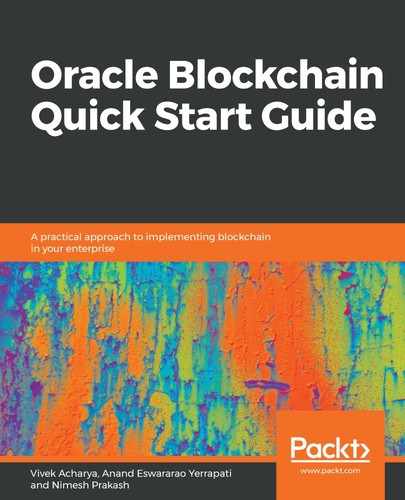Broadly speaking, blockchain is an ideal use case for the decentralized consensus on ledgers that are appended by themselves on agreed transactions that are non-commutative. In this section, I'm going to categorize blockchain use cases into a few categories; however, I believe that there are millions of use cases, which is the result of non-commutative state transition functions. The listed categorization of use cases is exhaustive.
Let's start by simply putting the definition of blockchain into an equation:
When is the timeline, while How much is the quantity. However, What, is the topic of discussion here. My efforts to categorize blockchain are centered on What and Who.
WHAT: What represents the assets; essentially, the scarce assets that are valuable. Assets such as identity, currency, land title, contract, vote, provenance, and payments are valuable and scarce. Let's analyze various applications of blockchain and check what they actually manage. Bitcoin manages accounts, Ethereum manages contract states, Everledger manages events associated with diamonds, and trust lines are managed by Ripple, and so on. Similarly, for Hyperledger Fabric, assets can be tangible assets such as real estate and hardware, while intangibles are assets such as contracts and intellectual property. Hence, blockchain is a potential solution for those cases where the requirement is to transact those assets while establishing decentralized consensus by recording them on an immutable ledger.
WHO: At any given point in time, blockchain is a currency, a network, a protocol, or a platform. It is a notion that is driving the world toward a world of DAO or Decentralized Autonomous Communities (DAC). I will be using these terms interchangeably throughout.
An organization or an enterprise is a set of people who are working together to achieve a certain defined set of goals and follow rules. Such organizations own assets and liabilities, which means there are sets of people and legal contracts that establish the truth in holding assets and owning liabilities. An organization acts because there is a mutual consensus between a key set of people to do so. Similarly, hiring someone means an employee has agreed to offer certain services while an employer has agreed to offer monetary and other benefits. In all of these cases, there are contracts (sets of rules).
The question is: do we really need management to execute these rules, or do we need certain jobs at certain business functions to execute these contracts? Industrialization answered this by incorporating machines at the bottom level; can DLT, such as blockchain, do it for the top levels as well? Organizations stand and operate on contracts and rules while following regulations, which are, again, a set of rules. Organizations execute these contracts and rules to generate revenue, offer services, and pay employees for the services they offer to the organization so that the organization can offer its services to their customers and pay taxes to the government. Can these not be achieved by software and, in particular, by DLTs such as blockchain and Hyperledger?
To me, the answer is yes, and with minimal human involvement. There can be DAOs (also referred as DACs), where asset owners are the stakeholders, and smart contract and chaincode are the rules and contracts that take care of the daily, strategic, and tactical operations of the organizations. Participating nodes are the employees themselves, who take care of validating, verifying, and reaching consensus with minimum rewards. Yes, it's too early to fully chart the upcoming future of DAOs; it is possible to have a distributed one-world government where policies and relationships are taken care of by super smart contracts.
Well, jumping back to the present and glancing back at the preceding equation, let's concentrate on the Who. While adopting blockchain, the key elements that you should look for are as follows: what are the assets and what is the consensus mechanism that the business will consent to when moving toward blockchain? Are you planning for a DAO or is your business planning to establish a business network where parties will interact and a consortium will be established? Here, I'm hinting toward the permissioned and permissionless world of blockchain. In either case, Who is important and needs to be determined. Since the world of DAOs and DACs is unwinding, I'm considering a marketplace fueled by smart contracts and chaincodes as a category of use case for blockchain. The more mature the world of DLT gets, the closer the world will move toward the reality of DAOs and DACs. Now, let's get back to the equation again and look at the other two parts of the equation, other than What and Who. These two pieces are When and How much. Essentially, How much is a generic term for quantity and all the other parameters for an asset. When helps in analyzing the timelines, the dates of the events, and transactions.
Now, the question is, how to we derive information about Who, When, What, and How much? This information is part of the blockchain ecosystem and brings the third most important category of use cases, which is the analytics. Go into design and development and try to always put forward the visibility aspect of the solution. Based on the equation and the definitions around it, there are three primary categories of blockchain use cases:
- Digital assets
- Digital analytics
- Digital platform
In this section, we will deep dive into these categories and list the subcategories of these blockchain use cases.
